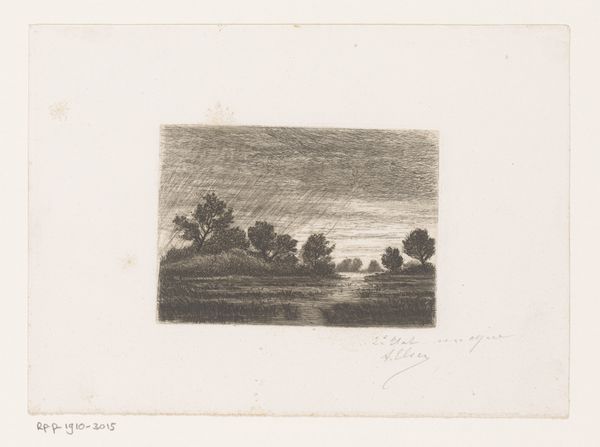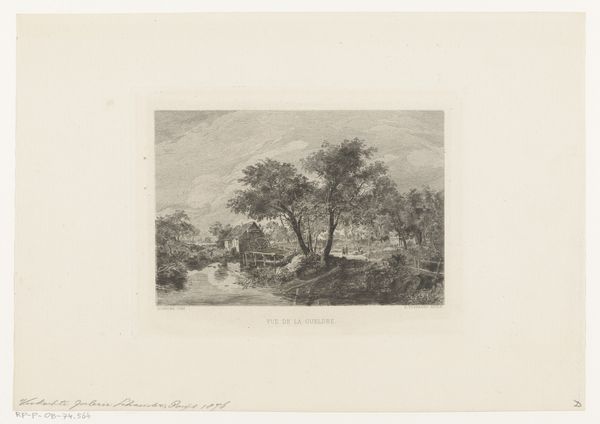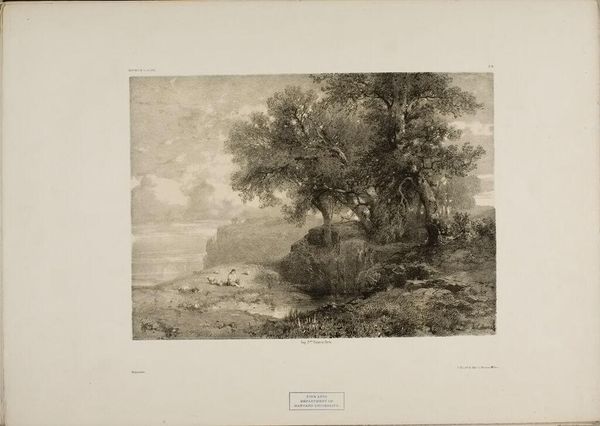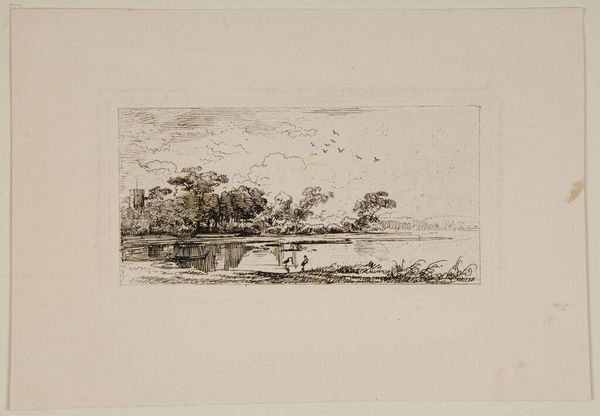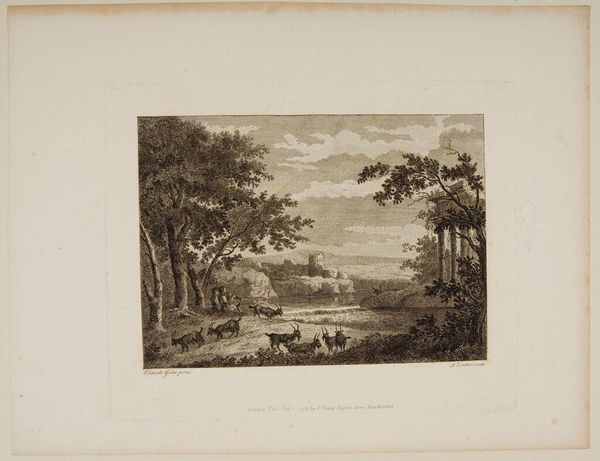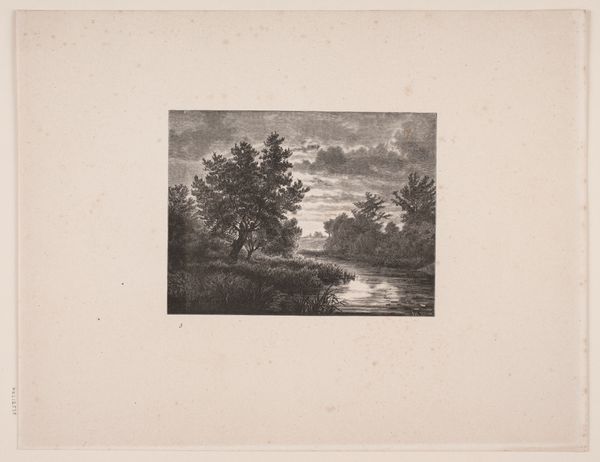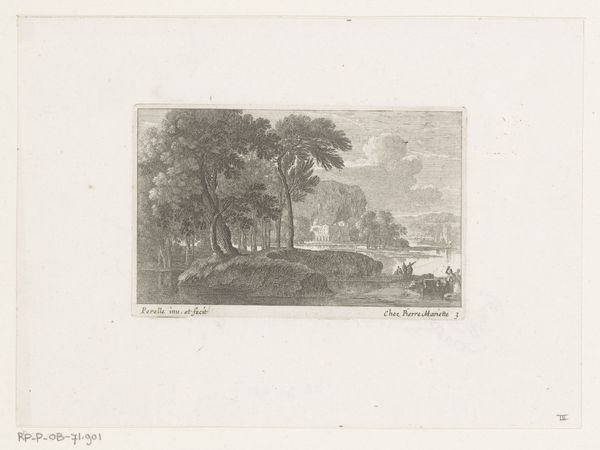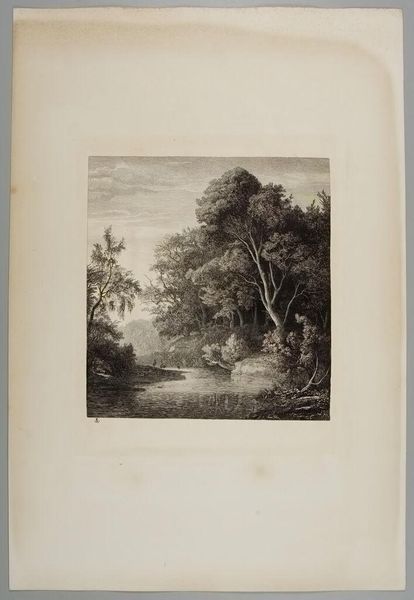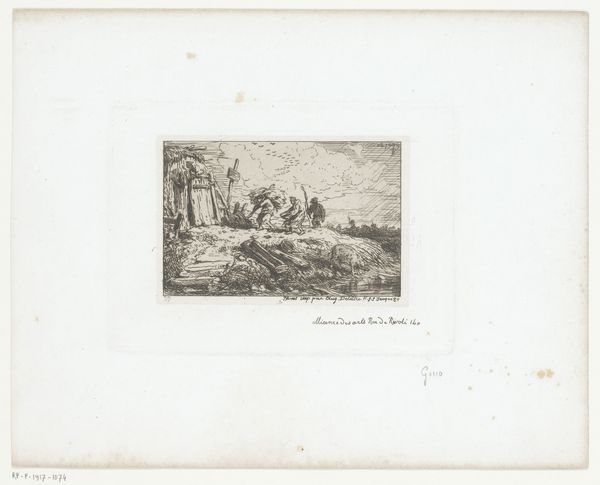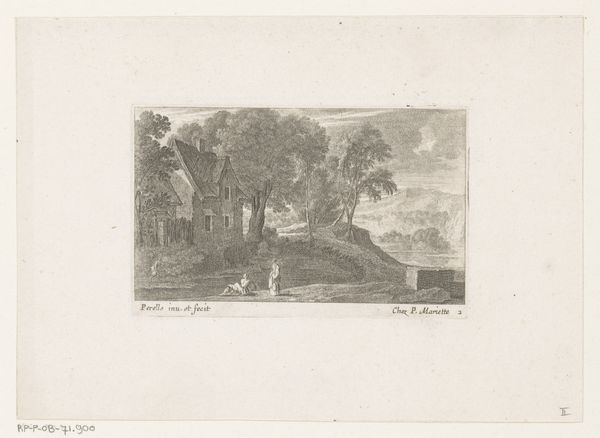
Copyright: CC0 1.0
Editor: This is William Say's "Glaucus and Scylla," from the Harvard Art Museums. The print gives off a melancholy vibe. I am struck by how the landscape dominates the figures. What do you make of this composition? Curator: Considering its historical context, this print speaks volumes about power, desire, and transformation within patriarchal structures. Scylla's tragic fate, driven by unwanted male attention and Circe's jealousy, becomes a potent symbol for female agency denied. Editor: So, you're saying it's not just a mythological scene, but a reflection on the social dynamics of the time? Curator: Precisely. The dominance of the landscape could represent the overwhelming forces acting upon Scylla, stripping her of control over her own narrative and body. It asks us to consider who gets to tell these stories and whose perspectives are centered. Editor: That's a powerful interpretation. I hadn't considered the social commentary embedded in the image. Curator: These old prints can have modern relevance. Examining these mythological narratives through a feminist lens reveals enduring patterns of oppression and the ongoing struggle for female autonomy.
Comments
No comments
Be the first to comment and join the conversation on the ultimate creative platform.

